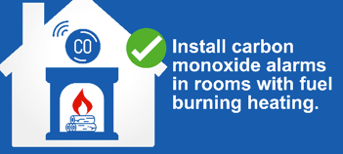Safety advice for Bio-Ethanol Burners

Bio-ethanol burners produce carbon monoxide (CO) during combustion, so it’s essential to be aware of the potential dangers. CO is a colourless, odourless gas that can be lethal if inhaled in high concentrations. To help keep your household safe:
- Choose a high-quality burner from a reputable manufacturer.
- Ensure that the burner complies with safety standards and is made from durable materials.
- Carefully read and follow the manufacturer's instructions.
- Pay attention to safety guidelines, recommended installation methods, recommended fuel types and quantities, and proper lighting and extinguishing procedures.
- Place the burner on a stable, non-flammable surface.
- Keep away from any flammable materials such as curtains, furniture, or wooden flooring.
- Ensure there is ample space around the burner for proper ventilation and to avoid any potential fire hazards.
- Install Carbon Monoxide Alarms
- Choose battery-powered CO that meet British Standard BS EN 50291 (look for the BSI Kitemark).
- This standard specifies the requirements and test methods for these alarms, ensuring their effectiveness and reliability.
- It is advisable to have CO alarms on each level of your home and near sleeping areas.
- Regularly test your CO alarms according to the manufacturer's instructions.
- Replace batteries as needed and clean the alarms to keep them in optimal working condition.
- Ensure adequate ventilation is in place.
- Bio-ethanol burners produce heat and release carbon dioxide and moisture into the air. To maintain a safe and comfortable environment, ensure that the room is adequately ventilated.
- This can be achieved by opening windows or using an extractor fan to circulate fresh air.
- Be Aware of CO poisoning symptoms.
- These include headaches, dizziness, nausea, confusion, and breathlessness.
- If you or anyone in your household experiences these symptoms while using a bio-ethanol burner, immediately ventilate the area, evacuate, and seek medical attention.
- Only use bio-ethanol fuel that is specifically designed for bio-ethanol burners.
- Using alternative fuels can cause hazards, such as excessive smoke or heightened fire risk.
- Follow the manufacturer's guidelines when selecting and using fuel.
- Never leave a burning bio-ethanol burner unattended.
- Always closely monitor the flame and ensure it is extinguished fully before leaving the room or going to sleep.
- To extinguish the flames of a bio-ethanol burner, use the provided extinguishing tool or snuffer lid rather than blowing out the flames directly. This helps prevent accidental fuel spillage and ensures a safe and controlled extinguishing process.
- Keep a watchful eye on children and pets when the bio-ethanol burner is in use.
- Make sure they are aware of the potential dangers and establish clear boundaries to prevent accidental contact with the flames or the burner itself.
- Keep flammable materials at a safe distance from the bio-ethanol burner.
- This includes items such as furniture, curtains, and clothing.
- Avoid placing any objects directly on top of the burner or around it.
- Schedule regular maintenance and inspections for your bio-ethanol burner.
- Clean it according to the manufacturer's recommendations and closely inspect for any damage or wear.
- Address any issues promptly to ensure the burner continues to function safely.